The types of people, creatures, and environments you encounter while exploring tell you a lot about the kind of world you’re playing in. As a DM, it’s easy to just dump information upon your players, expecting them to take in all of the intricacies of your setting at once—but in practice, this sort of expository worldbuilding rarely sticks. Even attentive players will probably forget all but the most important details, and most players will get bored of being talked at and check out completely.
We discussed why subtle worldbuilding is so powerful back in Worldbuilding with Style and Subtlety. Today, let’s examine another useful method of subtle worldbuilding: using encounters, the most fundamental building block of the Dungeons & Dragons experience, to tell stories about your setting. Worldbuilding tag.

Our Terms
Before we get started, let’s quickly define some terms. I’ll use these words and phrases throughout the article, so please refer back here if you’re ever confused. You’ll probably be familiar with them already if you read the previous article in this series.
- Worldbuilding: the act of creating any sort of noun that defines your fictional world. Worldbuilding happens twice, first in creation, and then in communication.
- Noun: anything in the broad topic of people, places, and things, ranging from things as dramatic as legendary heroes to capital cities to ancient artifacts, to things as simple as a nation’s regional cuisine, the type of boats used for kelp-harvesting in a coastal town, and so forth.
- Worldbuilding Creation: the first phase of worldbuidling, when a DM creates facts about their world, often in private
- Worldbuilding Communication: the second phase of worldbuilding, when a DM shares the facts they created about their world with players, who synthesize this information into something new—either through miscommunication and misunderstanding, or from collaborative discussion about those facts
- Direct Communication: when a DM tells their players about the world, often making details explicitly clear
- Indirect Communication: when a DM shows their players worldbuilding elements, allowing players to interpret them and draw their own conclusions
What is an Encounter?
The encounter is the most fundamental story unit in a D&D game. An encounter is analogous to a scene in a traditional storytelling medium like a novel, a play, or a film. And while the word “encounter” is typically synonymous with a fight, there are many different kinds of encounters. The three pillars of a D&D adventure are exploration, combat, and social interaction, and each one of these pillars can be represented by an encounter.
The only mandatory element that must appear in an encounter, no matter which of the three pillars the encounter is a part of, is that the player characters encounter something controlled by the Dungeon Master. In other words, an encounter needs the characters to come into conflict with something else, and they need to find a way to overcome that obstacle and resolve the conflict. Here are examples of encounters along all three pillars.
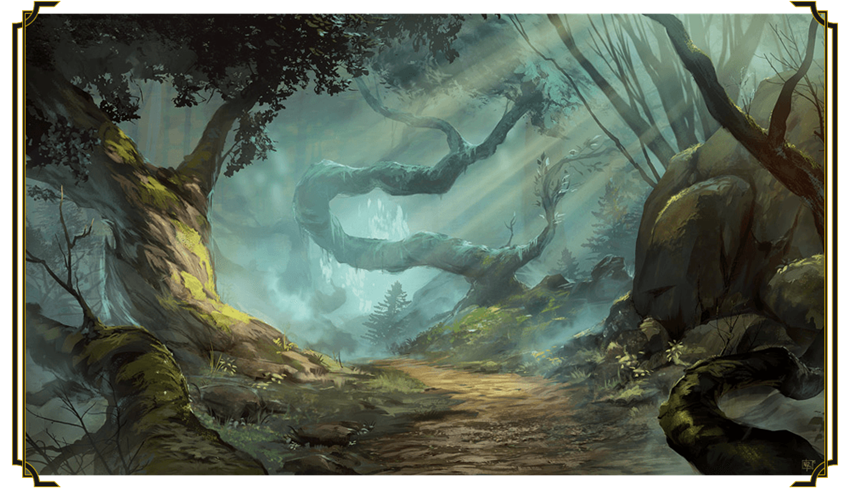
Combat
This type of encounter needs no explanation. When the word “encounter” is mentioned in terms of D&D, combat is what springs to most veteran players’ minds. The phrase “encounter design” is used in both video games and tabletop games to mean how creatures and terrain are arrayed to challenge the players in combat. This encounters often take place at short range, though some DMs may have combat encounters erupt at great distance, beginning with a long-range volley of longbow fire, forcing characters to scramble for cover.
Social Interaction
We have all had social interactions in real life. We also all have experience with social interactions in which we want something, and the person we’re talking with doesn’t want us to have it. And the other way around. This conflict is the basis of a social encounter in D&D. A friendly chat isn’t really a social interaction encounter, because neither participant in the conversation wants something from the other.
In some ways, social interaction encounters are the most complex type of encounter in D&D, and in other ways, they’re the simplest. D&D gives guidance on how to roleplay social scenes in the Basic Rules, but it doesn’t have many hard rules for social interaction in the way it has lots of rules for combat—though contrary to popular belief, there is a clear, rules-driven framework for social interactions found in the Dungeon Master’s Guide. It’s just not as in-depth as the rules for combat, and it’s contained exclusively within the game’s least-read core rulebook.
Social interaction encounters often take place between one player character and one NPC, but they can also take place in basically any combination of PCs and NPCs—between the entire party and one NPC, between one PC and several NPCs, and so on, and so on. The one constant in a good social encounter must be conflict. One person wants something (or several somethings), and another person doesn’t want them to get it, or that other person wants something else that is at odds with what the first person wants.
Exploration
“On a large scale, [exploration] might involve the characters spending a day crossing a rolling plain or an hour making their way through caverns underground. On the smallest scale, it could mean one character pulling a lever in a dungeon room to see what happens.”
—Introduction, D&D Basic Rules
Exploration encounters often take two distinct forms. Large-scale exploration and small-scale exploration. Large-scale exploration requires the characters to deal with the world and the landscape at large. It’s hard to condense large-scale exploration into digestible encounters, not in the way we can easily categorize tête-à-tête social interaction encounters or party-versus-monsters combat encounters. That’s because exploring a large swath of land is typically a framework for smaller encounters. Your party might “encounter” a mountain range that blocks their passage between the Sword Coast and the deserts of Anauroch, but that mountain range is really just an environment for other types of encounters—fights or parleys with mountain bandits, or small-scale explorations involving treacherous mountain paths.
Small-scale exploration encounters are more manageable, both for players and DMs. They typically involve discrete locations, making it easier to understand how a problem might be solved. These exploration encounters involve player characters overcoming unthinking, unfeeling obstacles. They might be natural, like the Fellowship of the Ring trying to pass over the mountain Caradhras and facing a blizzard summoned by Saruman, or artificial, such as a concealed pit trap with poison spikes at the bottom, cleverly concealed by the minions of Acererak in the Tomb of Annihilation. These encounters often revolve around characters making decisions about which path to take, making ability checks to overcome obstacles, and making saving throws.
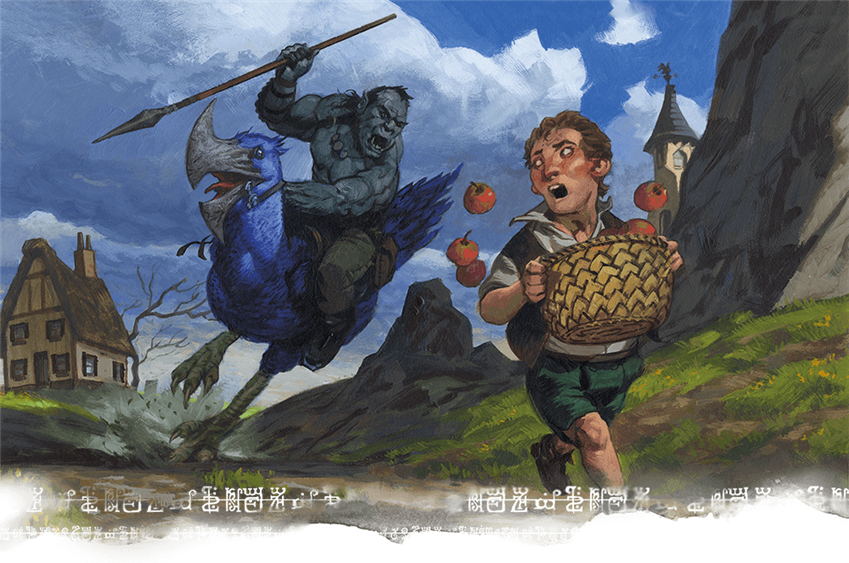
Worldbuilding through Encounters
You may have realized that all three of these encounter types can blend together. A social situation gone wrong can quickly turn into a battle, and a battle can just as easily turn into a tense negotiation with some well-placed words and a good Charisma (Persuasion) check. Likewise, an overland exploration encounter could become a frantic, running skirmish when an orc warband sees the party from atop a hill a thousand feet away and starts charging—or if the party sees the orcs first, and then enters a tense stealth-based exploration encounter as they try to sneak by unnoticed.
Even though these different encounters involve the characters facing different types of problems, be they starving monsters, intelligent humanoids, or unfeeling geography, they all have something in common. They’re all a puzzle that the characters (or their players) must understand and solve. Some puzzles are as simple as “reduce the monster’s hit points to 0,” but even the most mundane combat challenge can be wrinkled with terrain, damage resistances, or unique mechanics like weak points. Your goal is to get the players to think deeply about the problem they need to solve—and you can use this opportunity to “trick” them into caring about your setting by inserting cool setting details into each encounter for them to think about.
It’s not really a trick, though. It’s just good, subtle worldbuilding. Let’s look at how you can use different types of encounters to immerse your players in your campaign setting.
Immersive Exploration Encounters
Inserting mysterious locations or items into a wilderness or dungeon exploration is one of the most common ways for Dungeon Masters to subtly add depth to their world. At the highest level, biomes and climates are the first way a DM communicates anything about the campaign world. The bleak environments of Ravenloft are wildly different from the rolling green fields of the Sword Coast, which are in turn wildly different from the towering skyscrapers of Sharn.
A rewatch of the Lord of the Rings films will give you ample inspiration for environmental worldbuilding, from the imposing statues of Amon Hen to the vast and crumbling halls of Moria. This environmental design tells your players not just about the place they’re in, but about the people who created such things. Of course, not all environmental worldbuilding elements need to be ruins from a bygone era, like they so often are in Lord of the Rings and the countless fantasy stories that drew inspiration from it. What about markers and monuments left by people who are still living, or who only recently were killed. You can use graffiti on city walls to show what the downtrodden of a city value and fear. Or, you can subtly telegraph the powers of a monster by decorating its lair with grisly trophies of past kills—a manticore leaves snapped bones stripped clean of flesh, with dozens of shed spines nearby, whereas a salamander might post the charred corpses of its foes on stakes as a warning to those who would threaten its colony.
Likewise, when designing a dungeon and stocking it with traps, think of what kind of traps your dungeon creators would use. Bandits might use straightforward pit traps, whereas cunning thieves employ trip wires set to collapse a ceiling, and evil mages plant glyphs of warding. This sort of thoughtfulness might not be noticed consciously, but it helps your players intuitively understand the kind of danger they’re getting themselves into.
Immersive Social Interactions
Social encounters can be the hardest to use as a vehicle for subtle worldbuilding. The trick is that NPCs are a great way for the Dungeon Master to deliver raw information into the players’ heads in the form of a huge infodump. This can be useful, thanks to its sheer efficiency, but players are more receptive to information when they’re actively engaged in this story. The best way to lose player engagement is to start talking at them, and the best way to win it back is to have a conversation with them.
Rather than using NPCs as a high-density information dumping service, use them to deliver sparse information couched in subjective personal desires. Everyone wants things, everyone believes in things, and all of these wants and beliefs color how people interact. Think of your NPCs as people first and also one piece of interesting worldbuilding that you can communicate through them. It’s better if they don’t say it straightforwardly, but allow the players to infer it. In Dragon Age: Origins, the elves of Thedas are confined to a slum called the Alienage in the capital city of Denerim. The game goes to great lengths to tell you that elves are second-class citizens in Thedas, but they also let you see it firsthand through interactions between oppressors and the oppressed. Those moments are the most memorable.
Roleplaying dozens of NPCs in a believable manner is a challenging task, but it’s a vital skill for any DM who wants to portray a nuanced and plausible game world to learn. Being able to think quickly and improvise NPC motivations and desires on the fly is the best way to become good at this, since your biggest constraint as a Dungeon Master is the amount of time you have to (or want to) spend prepping for each session. The only way to become a better improvisational roleplayer is to practice, and reading Roleplaying 101: Improvising Your Way to Victory will give you a few foundational skills that will help you get started.
Immersive Combat Encounters
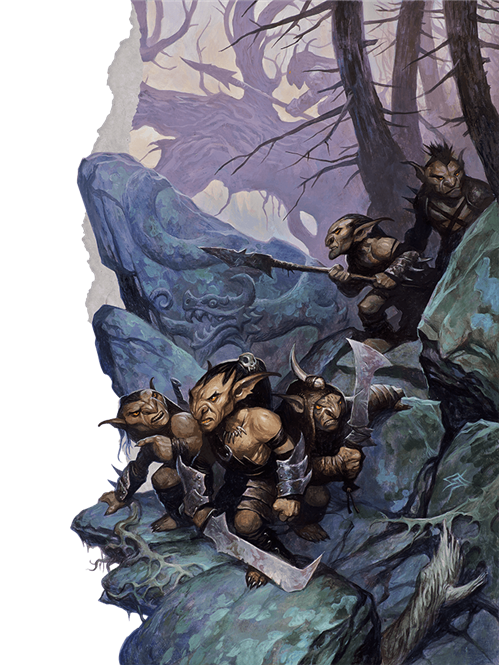 The best way to tell your players about the types of creatures that live in your world is to show them. Think about the kind of people and creatures that live in each region of your world, and create your own encounter table, like the Random Encounter Tables in Xanathar’s Guide to Everything. Rather than tuned to a specific environment, though, these tables can be fine-tuned to suit any given nation or region, regardless of environment.
The best way to tell your players about the types of creatures that live in your world is to show them. Think about the kind of people and creatures that live in each region of your world, and create your own encounter table, like the Random Encounter Tables in Xanathar’s Guide to Everything. Rather than tuned to a specific environment, though, these tables can be fine-tuned to suit any given nation or region, regardless of environment.
If you have qualms about using random encounters in your games, an encounter table is still useful even if it’s not used randomly. When creating a dungeon, you can roll on a region’s encounter table to create a few encounters with different types of creatures. Then, it’s up to you to create a story that links them together. For example, I’m creating a hilltop fortress and need to fill it with creatures that want to defend it. I’ll roll three times on the Hill Encounters (Levels 1–4) table, and see what I get.
I rolled:
- 54 (1 giant elk)
- 12 (2d6 tribal warriors)
- 96 (1d3 trolls)
Let’s throw together a quick story here. The troll is the strongest creature here, so let’s put it in charge. She can be a powerful warrior named Deltharl, and she rides the giant elk as a mount. The tribal warriors are a tribe of hill dwarves that have been enslaved by the troll. Let’s say that this region has hill dwarves who know about this hilltop fortress and avoid it. They call the place Trolltusk Gaol. This might also imply that there are other dwarven tribesfolk in the hills, and other troll fortresses.
Now I have a perfectly good location to place on my map of the hilly region of my campaign setting. If I do this three or four more times, then I have a well-developed sandbox for my players to explore! As the players explore, they’ll learn about the dwarves, the trolls, and maybe even come to the conclusion that there are other giant animals here, too. This is worldbuilding! Even though it doesn’t concern the fate of the cosmos, it’s still valuable, and the players can instantly engage with it.
What types of encounter-first worldbuilding have you done? Tell us about your campaign setting in the comments!
Create A Brand-New Adventurer Acquire New Powers and Adventures Browse All Your D&D Content
 James Haeck is the lead writer for D&D Beyond, the co-author of Waterdeep: Dragon Heist, Baldur's Gate: Descent into Avernus, and the Critical Role Explorer's Guide to Wildemount, a member of the Guild Adepts, and a freelance writer for Wizards of the Coast, the D&D Adventurers League, and other RPG companies. He lives in Seattle, Washington with his fiancée Hannah and their animal companions Mei and Marzipan. You can find him wasting time on Twitter at @jamesjhaeck.
James Haeck is the lead writer for D&D Beyond, the co-author of Waterdeep: Dragon Heist, Baldur's Gate: Descent into Avernus, and the Critical Role Explorer's Guide to Wildemount, a member of the Guild Adepts, and a freelance writer for Wizards of the Coast, the D&D Adventurers League, and other RPG companies. He lives in Seattle, Washington with his fiancée Hannah and their animal companions Mei and Marzipan. You can find him wasting time on Twitter at @jamesjhaeck.
 James Haeck is the lead writer for D&D Beyond, the co-author of Waterdeep: Dragon Heist, Baldur's Gate: Descent into Avernus, and the Critical Role Explorer's Guide to Wildemount, a member of the Guild Adepts, and a freelance writer for Wizards of the Coast, the D&D Adventurers League, and other RPG companies. He lives in Seattle, Washington with his fiancée Hannah and their animal companions Mei and Marzipan. You can find him wasting time on Twitter at @jamesjhaeck.
James Haeck is the lead writer for D&D Beyond, the co-author of Waterdeep: Dragon Heist, Baldur's Gate: Descent into Avernus, and the Critical Role Explorer's Guide to Wildemount, a member of the Guild Adepts, and a freelance writer for Wizards of the Coast, the D&D Adventurers League, and other RPG companies. He lives in Seattle, Washington with his fiancée Hannah and their animal companions Mei and Marzipan. You can find him wasting time on Twitter at @jamesjhaeck.








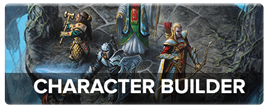
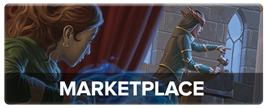
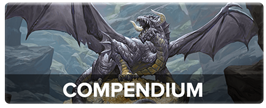
-
View User Profile
-
Send Message
Posted Apr 19, 2020The very first line in Dr_Frederick's comment addresses your question:
The section is a page and a half long, p. 244-245 in the DMG. And it should be obvious that the author of the article can't just copypaste a huge chunk of (non-SRD) text from the book into their article. That'd be copyright infringement. James did, however, include a link to that section of the DMG for convenience.
-
View User Profile
-
Send Message
Posted Apr 20, 2020Building your own encounter table is an excellent exercise for getting a handle on a region.
A 2d6 tends to be a pretty manageable base, at least compared to a full d100 table.
Remember that you don’t need an entry for every number, most of them stretch over a range of two or three.
-
View User Profile
-
Send Message
Posted Apr 20, 2020Ah, I suspected it was something like that.
-
View User Profile
-
Send Message
Posted Apr 20, 2020Thank you
-
View User Profile
-
Send Message
Posted Apr 21, 2020James, this is an incredible article! I especially liked the example under combat encounters.
Reader request: I’d love to see more examples of this. Maybe an entire article where you roll on encounter tables, and brew a quick story around whatever comes up that links the creatures together. Perhaps 3-4 case studies like that per article.
This could even become a new series! :)
-
View User Profile
-
Send Message
Posted Apr 21, 2020Cool idea! Can you point me to a workflow for creating such tables? Step 1: do this, step 2: do that
specifically, how do you determine the ranges/probabilities? What’s the thought process?
-
View User Profile
-
Send Message
Posted Apr 21, 2020This is a great idea, and I'll consider it!
Check out the Random Encounters section in chapter 3 of the Dungeon Master's Guide. It goes into detail on how to do exactly this!
-
View User Profile
-
Send Message
Posted Apr 21, 2020That’s an excellent question. As James said, the DMG has the much more extensive information on this matter, but I’ll give my two cents.
With a 2d6 table specifically (as opposed to a d12), the thing to remember is that the middle results are more probable than the extremes. A “7” has a 1/6 chance of coming up, while “2” and “12” only have a 1/36 chance.
So, when I‘m making a table, step 1 is to pick the two most powerful creatures in the area (usually the leaders of opposing factions) to put at opposite ends of the chart.
Step 2, I work my way towards the middle, picking lieutenants and exceptional minions for each side, and then more common representatives of both factions.
Step 3, Finally, for the middle entry, I usually add a neutral threat, often a natural hazard like beasts or an unaligned monster.
If you’re really interested in the probability clumping, this example has a good arrangement.
This is a good generic table to work from. You have quite a bit of room to tweak the ranges as needed.
A lower level party is less likely to attract the attention of an old dragon or powerful wizard, so the range of their entries might be restricted to just “2” and “12” respectively. On the opposite extreme, the presence of a more experienced party might spur their enemies to undertake a calculated assault, combining the common minion and lieutenant entries into a single expedition.
-
View User Profile
-
Send Message
Posted Apr 22, 2020On the subject of story-driven encounter tables, I decided to try describing the conflict within “Wave Echo Cave” an as an encounter table.
This is not to suggest that there is any fault with the table already given for the dungeon. Like many of the maps and tables in the Lost Mines of Phandelver, it is a versatile resource you can pull out and use in many other contexts.
However, this versatility comes with a degree of genericness. Only one out of the table’s seven entries portrays any part of the Black Spider’s forces, despite him being the central antagonist of the adventure.
I know that I’m taking quite the liberty by making it possible to encounter Mormesk and Nezznar outside of their fortified niches. But, they seem far too important to leave out. Including named creatures in the “wandering monster” table suggests that the elements of the dungeon are mobile, moving use further away from the Dungeon’s keyed encounters, which may add dynamism or may just further complicate matters.
The idea to convey is the story of a moving conflict. The party is entering a battle, in median res, as the Blackspider’s assault actively gains ground, and the besieged undead push back against the intruders wherever they can.
-
View User Profile
-
Send Message
Posted Apr 22, 2020James & Dr_Frederick - thank you so much for the reference and taking the time to walk me through this!
-
View User Profile
-
Send Message
Posted Apr 22, 2020I use the encounter builder not just for combat encounters, it's handy to have stat blocks for npcs and creatures that the players interact with
-
View User Profile
-
Send Message
Posted Apr 22, 2020This has definitely added perspective to how I should populate the world. Also adds to what lives in certain locales, how the world is oriented, etc. Sounds like I've got my work cut out for me in expanding my world and why things live in certain places. :)
-
View User Profile
-
Send Message
Posted Apr 23, 2020You’re very welcome. I hope I could be of help.
-
View User Profile
-
Send Message
Posted Apr 24, 2020I'm glad to see some of this kind of content on here, if only partly because I have a million and one ideas about what amounts to an "encounter." I think that the definition of "unit of storytelling" is a useful definition, but I would add that what makes something an encounter is conflict. I can understand why James stayed away from this terminology, since he was trying to sort of eschew the idea that "encounters" and "fights" are the same thing. Fundamentally, conflict is essential to stories and storytelling. There is no substance to a story without conflict, and I think it's great, personally, that D&D's three pillars of storytelling dovetail beautifully with the three classical conceptions of conflict: man vs. man (combat), man vs. nature (exploration), and man vs. self (social).
This is pretty specific to my approach, but I think that the type of encounter tells you the kind of conflict you're aiming to resolve, but for it to truly be an encounter, there must be conflict. James mentioned the Lord of the Rings films and books, but a great example for Exploration encounters are the film "The Martian" and the Netflix reboot of "Lost in Space"; these characters are almost never in conflict with other physical beings, but they have real and true conflicts with the very environment around them. The environment isn't trying to kill them, it simply represents and ineffable force that acts in a way that conflicts with the heroes' goals. This is a great way to think about Exploration encounters - a trap or a pit doesn't actively hate them, nor does scaling a mountain or crossing a rickety bridge, but it can still hinder or hold them back. I also think Exploration encounters are a great way to slide in "boons" for your players - they present a conflict which will be resolved simply by the game continuing, but through success and the expenditure of resources and some clever play, the heroes can get something even better out of it. Watney's adventures on Mars are a fantastic example of this.
Social encounters is the one that I think is the hardest to design as the DM, and it's my opinion that the rules material gives us very little guidance for this, but previous editions excelled at this. The DMG2 and DMG3 from 4th Edition are great books for fleshing out these sorts of encounters, but I would urge DMs to take a step forward: above, I mentioned that I treat Social encounters as man vs. self conflicts, and I truly believe that. Every one of your player characters, the heroes of your story, are essentially two forces in opposition to each other within themselves. The player essentially acts as the mind and the soul of the character, but the wants and desires of the player can often stand at odds with the wants and desires of the character. A social encounter should present conflicts with low risk of personal or bodily injury, but they are at their best when a player has the opportunity to expose a conflict that exists within their character. An easy example is imagine requesting an audience with a monarch to obtain safe passage through their lands. She's willing to give them not only that and more, but only if they agree to do a thing that one of the group finds morally questionable or falls outside of their character's desires. The group wants to do the thing, most of their characters don't mind this ultra specific taboo, but this one character (via their player) discovers a conflict within themselves that must be resolved.
I think pinpointing the conflict and having a plan for how to resolve that conflict is what makes something an encounter. I think the game is full of exploration and social elements or interactions that aren't inherently encounters, but I think if you can build a plan to introduce conflict for the characters to resolve, that's what makes it a real encounter. And if you can introduce some wordlbuilding therein, that's even better.
-
View User Profile
-
Send Message
Posted Jul 6, 2020I am trying to make a world. This idea of worldbuilding through encounters will help me frame and develope the world that I am creating. Super usefull.